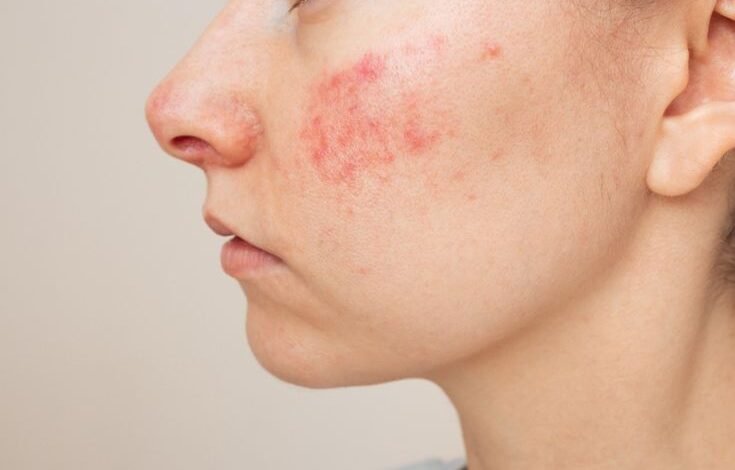Eczema PRP Therapy: Can Platelet-Rich Plasma Help?
Eczema PRP Therapy: Can Platelet-Rich Plasma Help?

Introduction
Eczema, also known as atopic dermatitis, affects millions of people worldwide. Its symptoms—redness, itching, dryness, and inflammation—can significantly impact day-to-day life. While there are many treatments aimed at alleviating discomfort and controlling flare-ups, the search for innovative, effective solutions continues.
One such emerging treatment is Platelet-Rich Plasma (PRP) therapy. PRP has shown promise in addressing a variety of skin concerns, including eczema. This blog explores how PRP works, its potential benefits, and what individuals struggling with eczema should know before considering it as a treatment option.
Understanding Eczema
Types of Eczema and Their Symptoms
Eczema is not a one-size-fits-all condition—it can appear differently depending on the individual. Here are the most common types of eczema and their symptoms:
- Atopic Dermatitis: The most common form, characterized by dry, itchy, and inflamed skin.
- Contact Dermatitis: Triggered by contact with allergens or irritants like chemicals, soap, or certain materials.
- Dyshidrotic Eczema: Blisters on hands and feet accompanied by intense itching.
- Seborrheic Dermatitis: Red, scaly patches often seen on the scalp, face, or chest.
- Nummular Eczema: Round, coin-shaped spots of irritation on the skin.
Common Triggers and Risk Factors
Eczema flare-ups are often triggered by a combination of environmental and personal factors. Common triggers include harsh soaps, pollen, stress, and changes in weather. Those with a family history of eczema, asthma, or hay fever are at a higher risk. Identifying individual triggers is key to managing the condition.
PRP Therapy for Eczema
What is PRP Therapy?
Platelet-Rich Plasma (PRP) therapy is a cutting-edge medical treatment that uses the patient’s own blood to stimulate healing and repair. Once the blood is drawn, it’s processed to separate the plasma rich in platelets—a component of the blood known for its healing properties.
How PRP Is Used for Eczema Management
PRP is directly injected into affected areas of the skin, aiming to boost the body’s natural healing processes. For eczema patients, PRP may help reduce inflammation, repair damaged skin, and improve overall skin texture.
Benefits and Potential Drawbacks of PRP Therapy
Benefits
- Natural Treatment: PRP uses the patient’s own blood, reducing the likelihood of adverse reactions.
- Accelerates Healing: PRP promotes quicker healing of irritated and damaged skin.
- Minimizes Itching and Redness: Many patients report relief from severe itching and redness after treatment.
- Long-Lasting Results: Compared to topical treatments, PRP offers longer-lasting improvements.
Drawbacks
- Cost: PRP therapy can be expensive and may not be covered by insurance.
- Limited Research: While promising, more studies are needed to fully confirm PRP’s efficacy for eczema.
- Potential Pain: The injection process may cause discomfort for some individuals.
The Science Behind It
How PRP Works to Treat Eczema
PRP is packed with growth factors and cytokines that stimulate cellular repair and reduce inflammation. These biological compounds help calm overactive immune responses, a hallmark of eczema flare-ups. By promoting skin regeneration, PRP may restore the barrier function of the skin, which is often compromised in eczema sufferers.
Research Supporting PRP for Eczema
Although still in its infancy, early research indicates that PRP may be effective in reducing eczema symptoms. A study published in Dermatologic Surgery found that PRP reduced inflammation and improved skin texture in eczema patients. Another study in the International Journal of Dermatology observed significant symptom relief among PRP recipients.
The Procedure
Step-by-Step Guide to PRP Therapy for Eczema
- Consultation: A dermatologist or qualified healthcare provider evaluates your condition to determine if PRP is suitable for you.
- Blood Draw: A small sample of your blood is taken, usually from your arm.
- Centrifugation: The blood sample is placed in a centrifuge to isolate the platelet-rich plasma.
- Injection: The PRP is injected into the areas of the skin affected by eczema.
- Post-Treatment Care: Patients may be advised to avoid certain activities or products to maximize results.
What to Expect During and After Treatment
- Treatment Duration: The entire process usually takes 30-60 minutes.
- Downtime: There’s little to no downtime, though some redness or swelling may occur.
- Results Timeline: Improvements may be noticeable within a few weeks, with continued benefits over the following months.
Case Studies and Success Stories
Many individuals with eczema have experienced transformations through PRP therapy. For instance, Sarah, aged 35, suffered from persistent atopic dermatitis for years. After three sessions of PRP therapy, she reported significantly fewer flare-ups and smoother, healthier skin. Her dermatologist noted an improvement in skin hydration and reduced redness.
Similarly, Michael, a 40-year-old construction worker, turned to PRP after topical steroids stopped being effective. Within months, his inflamed skin showed remarkable healing, allowing him to return to work comfortably.
Integrating PRP with Other Treatments
PRP therapy often works best as part of a comprehensive treatment plan. Combining PRP with traditional eczema remedies, such as moisturizers, antihistamines, and corticosteroids, can enhance the overall effectiveness.
Dietary modifications and stress management techniques, like yoga or meditation, can also complement PRP therapy, fostering better skin health.
Future Directions and Research
Emerging Trends in PRP Therapy
Scientists are continually exploring ways to optimize PRP, such as combining it with stem cells or other regenerative therapies. Additionally, innovations in delivery mechanisms (like microneedling) could make treatments even more effective for eczema patients.
Areas of Ongoing Research
- Identifying the best candidates for PRP therapy.
- Comparing PRP to other advanced treatments, like biologics.
- Understanding the long-term effects of repeated PRP sessions.
Taking the Next Step Toward Healing
Living with eczema can be challenging, but PRP therapy offers a natural, promising path toward relief and renewal. By reducing inflammation, repairing damaged skin, and restoring its barrier function, PRP brings hope to those seeking an alternative to conventional methods.
If you’re ready to explore whether PRP is the right option for you, consult with a qualified dermatologist today. Together, you can create a personalized treatment plan that meets your unique needs.



